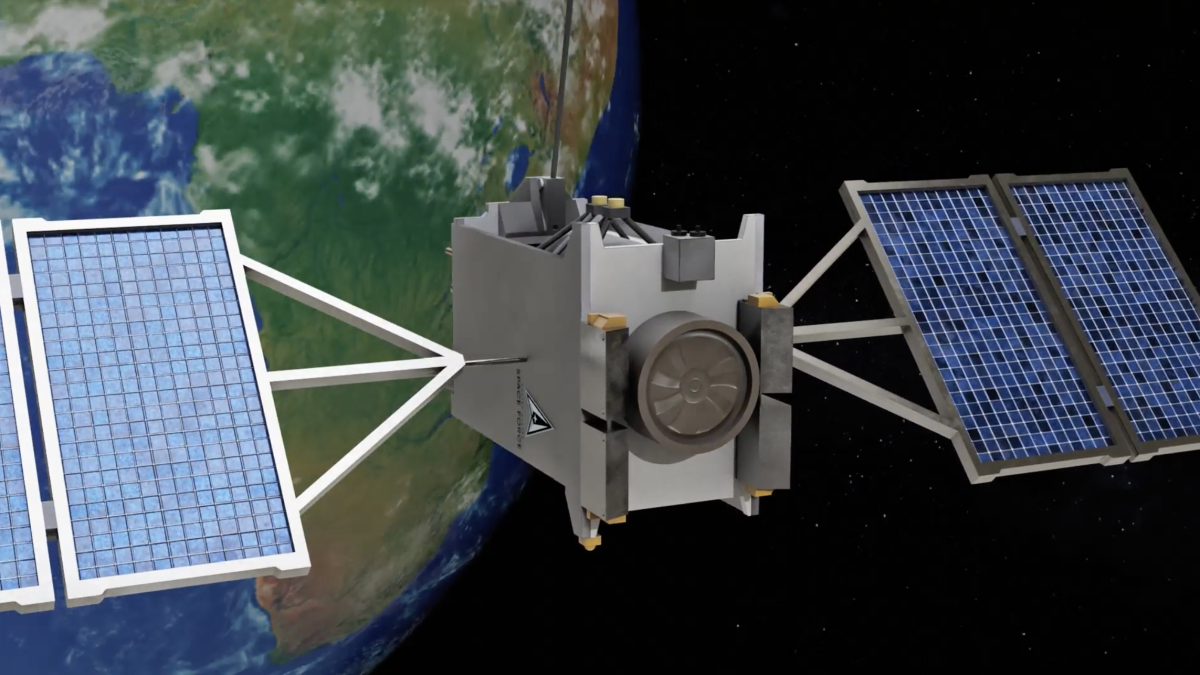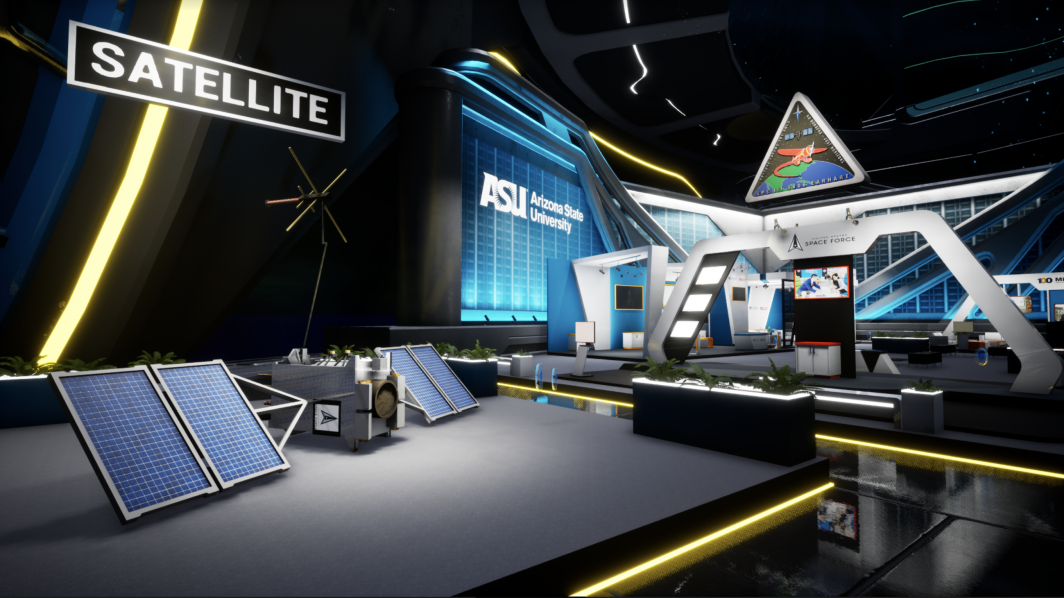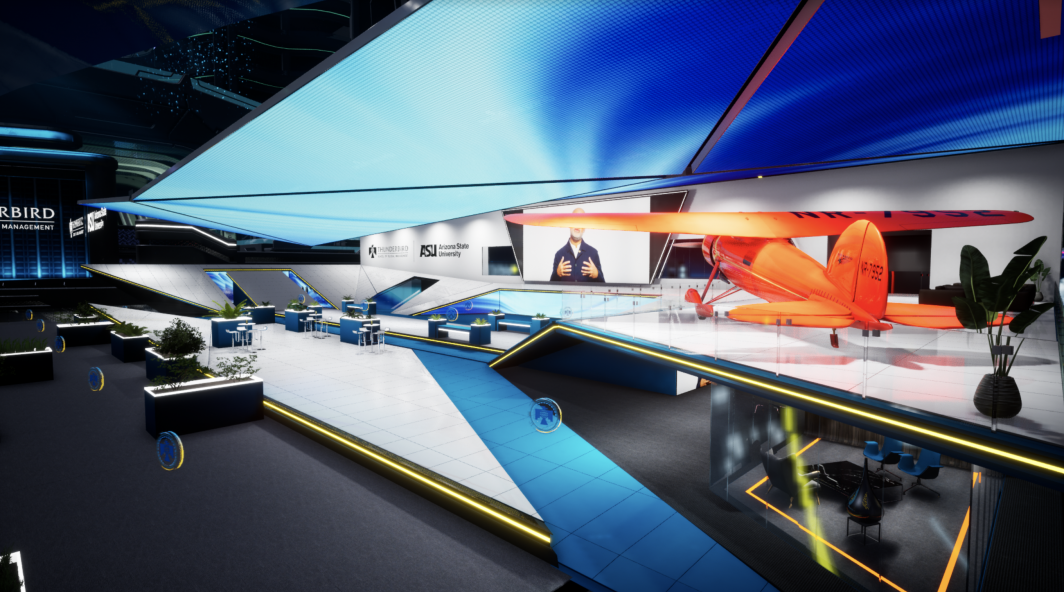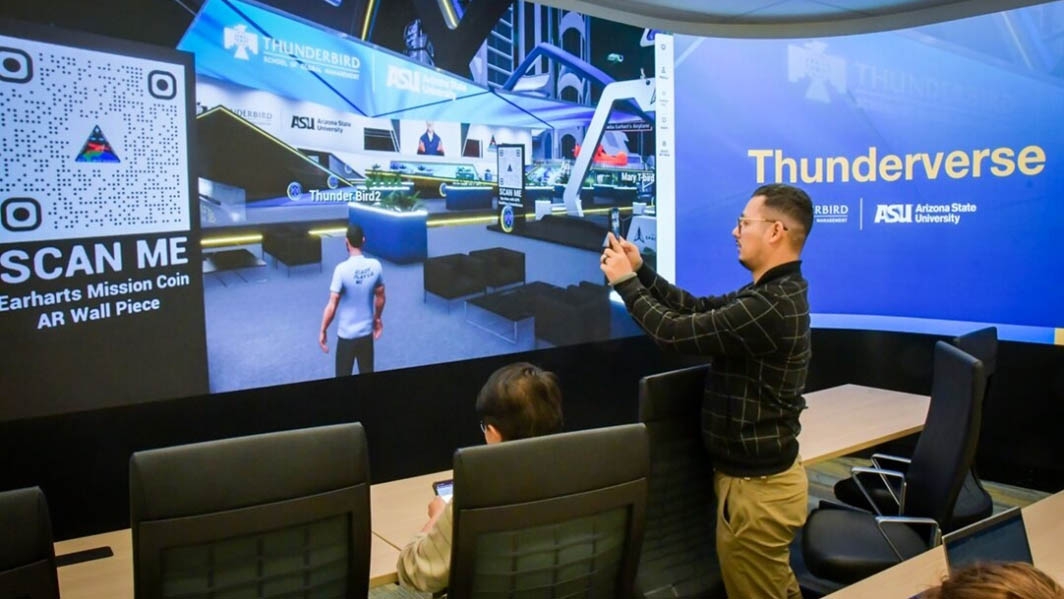Thunderbird at ASU launches into the metaverse with Space Force satellite launch viewing

On Jan. 18, the Thunderbird School of Global Management at Arizona State University virtually launched the United States Space Force’s Global Positioning System III SV06 satellite, named Earhart, into the metaverse, timing it with the actual launch of the GPS III SV06 Earhart satellite into space.
Through a licensing agreement with the U.S. Space Force, Earhart will be the sixth space vehicle of Space Systems Command’s GPS III fleet of satellites that will advance the GPS constellation's global positioning and navigation services for military and civilian users. The satellite was named after one of the most iconic aviation trailblazers Amerlia Earhart, continuing the GPS III program team's tradition of satellite naming in honor of prominent historical explorers and channeling their fierce spirits of adventure and teamwork to achieve great things.
For the launch of the Earhart satellite in the metaverse, Thunderbird partnered with Pixel Canvas, a browser-based, 3D, interactive platform, to create the Thunderverse, which represents a virtual environment that mimics the features of a futuristic space station. On Jan. 18, attendees entered the Thunderverse with a virtual avatar and interacted and chatted with one another as they watched the Earhart satellite launch into space.
MORE: Watch a teaser of the Thunderverse
"The Thunderverse represents Thunderbird's first steps into a live metaverse interplanetary experience. It is truly the future of immersive learning and education," said Sanjeev Khagram, director general and dean of Thunderbird. "We're honored to create such a unified digital forum with inclusive rights holders and amazing creators as we launch the Thunderverse, a first-of-its-kind metaverse program, and the future launch of the Thunderbird Academy of Intergalactic Leadership to create more opportunities for students, industry, humanity and beyond, and advance inclusive and sustainable prosperity worldwide."
The Thunderverse was created as a virtual convening space to bring together stakeholders, business leaders and industry experts across the Thunderbird global community to exchange ideas in a virtual environment. By leveraging metaverse technologies, virtual reality and augmented reality, Thunderbird is providing an enhanced experience for students, executive clients and lifelong learners worldwide by transforming virtual events, meetings and classroom settings into global collaborative learning environments.
During the event, attendees in the Thunderverse were able to:
- Learn about Thunderbird Space Initiatives and degrees, the 100 Million Learners Global Initiative and Space Force in virtual booths.
- Converse with GPS III SV06 Earhart Satellite experts.
- Scan QR codes displayed throughout the virtual space station and interact virtually with satellites in the GPS constellation on iOS and Android mobile devices through the VueXR platform, and much more.
Attendees were also able to walk up to Earhart satellite, Amelia Earhart's airplane and more to examine it in real time. Earhart set two of her many aviation records in this plane. The first as she flew it alone across the Atlantic Ocean in 1932 and then again when she flew it nonstop across the United States — both firsts for a woman. She bought it in 1930 and called it her "Little Red Bus.”
The immersive event featured interactive AR displayed on the Thunderverse VueXR channel, including a 3D Earhart Satellite, patch, coin, GPS constellation and 12-day orbit digital assets. As the Earhart satellite provides crucial national security capabilities from orbit, the AR and metaverse delivery extends its legacy and reflects the U.S. Space Force's and the Amelia Earhart estate's desire to inspire and educate current and future generations about the importance of developing and advancing space capabilities required to protect the U.S. and its allies from space-related threats.
“The metaverse is not just a mega trend, it’s a medium. A way to communicate, educate and participate in shared experiences,” said Travis Cloyd, global futurist, professor and senior fellow at Thunderbird.
Cloyd, who helped spearhead Thunderbird's metaverse program and direct the U.S. Space Force's first metaverse satellite launch campaign, is also a professor of practice for Thunderbird’s Masters of Leadership and Management with a specialization in global creative industries degree program. The program is designed for individuals pursuing global leadership and management careers in film, television, new media, music, AR, VR, gaming, e-sports, sports, advertising and branding.
Thunderbird is also a leader in space management education and has two of the most innovative space leadership programs: the Executive Master of Global Management with a specialization in space leadership, business and policy progam and the executive certificate in space leadership, business and policy.
Note: This activity supports the U.S. military and its veterans, however, it is not officially connected to or endorsed by the U.S. Department of Defense or any of its branches.
Image courtesy Thunderbird School of Global Management
More Science and technology

ASU and Deca Technologies selected to lead $100M SHIELD USA project to strengthen U.S. semiconductor packaging capabilities
The National Institute of Standards and Technology — part of the U.S. Department of Commerce — announced today that it plans to award as much as $100 million to Arizona State University and Deca…

From food crops to cancer clinics: Lessons in extermination resistance
Just as crop-devouring insects evolve to resist pesticides, cancer cells can increase their lethality by developing resistance to treatment. In fact, most deaths from cancer are caused by the…

ASU professor wins NIH Director’s New Innovator Award for research linking gene function to brain structure
Life experiences alter us in many ways, including how we act and our mental and physical health. What we go through can even change how our genes work, how the instructions coded into our DNA are…




